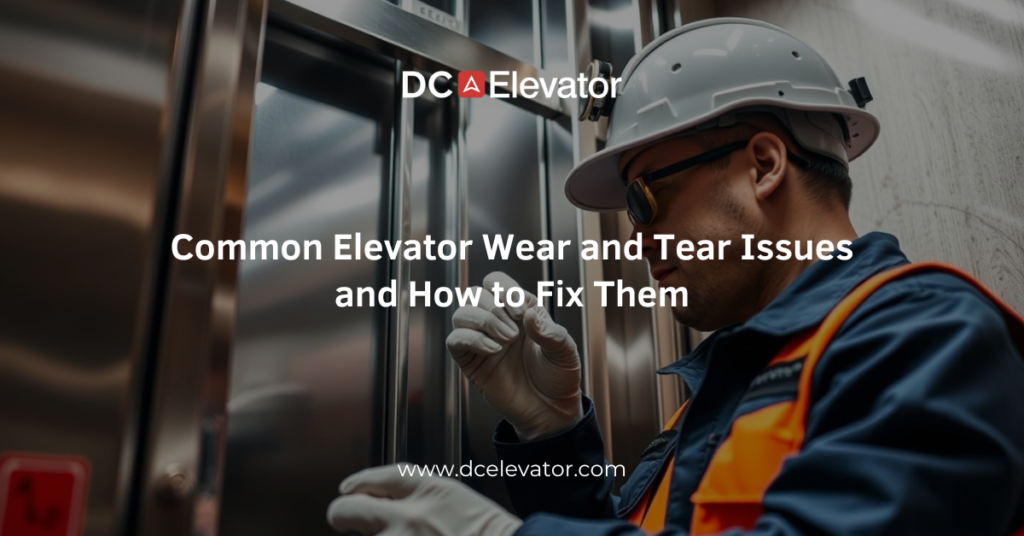Elevators are an essential part of modern buildings, providing convenience, efficiency, and accessibility. However, like any mechanical system, elevators experience wear and tear over time. If left unaddressed, minor issues can escalate into major problems, leading to costly repairs or even safety concerns.
For building owners and facility managers, understanding common wear and tear issues can help prevent breakdowns and extend the lifespan of an elevator system. This blog will cover the most frequent elevator wear issues and practical solutions to keep them running smoothly.
Common Elevator Wear and Tear Issues
1. Door Malfunctions
Elevator doors are one of the most frequently used components and are prone to various issues, such as:
- Misalignment: Doors may not close properly due to misaligned tracks.
- Sensor Failures: If the sensor is dirty or faulty, doors may not detect passengers correctly.
- Wear on Rollers and Tracks: Continuous movement can lead to deterioration over time.
Solution: Regular cleaning of sensors and lubrication of tracks can prevent these issues. If misalignment persists, professional realignment or component replacement may be necessary.
2. Slow Operation or Jerky Movements
If an elevator moves sluggishly or makes sudden stops, this could indicate:
- Worn-out cables or pulleys
- Hydraulic fluid leaks (for hydraulic elevators)
- Electrical system failures
Solution: Regular inspections and scheduled maintenance checks can help identify worn components before they fail. Lubricating moving parts and replacing aging cables or pulleys can restore smooth operation.
3. Unusual Noises
Rattling, squeaking, or grinding sounds are warning signs of mechanical issues such as:
- Loose bolts or screws
- Faulty bearings or pulleys
- Worn motor components
Solution: Routine maintenance, including tightening bolts and lubricating bearings, can prevent excessive noise and potential failures. If noises persist, a professional technician should inspect the system.
4. Frequent Breakdowns
Frequent service interruptions can result from:
- Electrical issues (e.g., circuit board malfunctions)
- Control panel failures
- Aging mechanical components
Solution: Upgrading outdated electrical systems and replacing worn components can reduce breakdown frequency. Preventative maintenance plans ensure that issues are addressed before they become serious.
5. Uneven Floor Leveling
When an elevator stops slightly above or below the designated floor, it can pose a tripping hazard. Causes include:
- Hydraulic fluid leaks
- Worn braking system
- Faulty leveling sensors
Solution: Regular inspections of hydraulic and braking systems can prevent misleveling. Sensor recalibration or replacement may also be necessary.
Importance of Preventative Maintenance
Routine maintenance is the key to preventing costly elevator repairs. Some benefits include:
- Increased safety for passengers
- Reduced downtime due to unexpected failures
- Longer lifespan of elevator components
- Compliance with safety regulations
A well-maintained elevator not only enhances efficiency but also reduces liability risks for building owners.
Addressing common elevator wear and tear issues promptly can save building owners and facility managers from costly repairs and safety hazards. Regular maintenance, timely upgrades, and professional inspections are essential to keeping elevators functioning efficiently.
If your elevator is showing signs of wear, our experts can assess whether a modernization upgrade is the best solution. Contact us today for an elevator analysis and ensure your system remains reliable for years to come.
